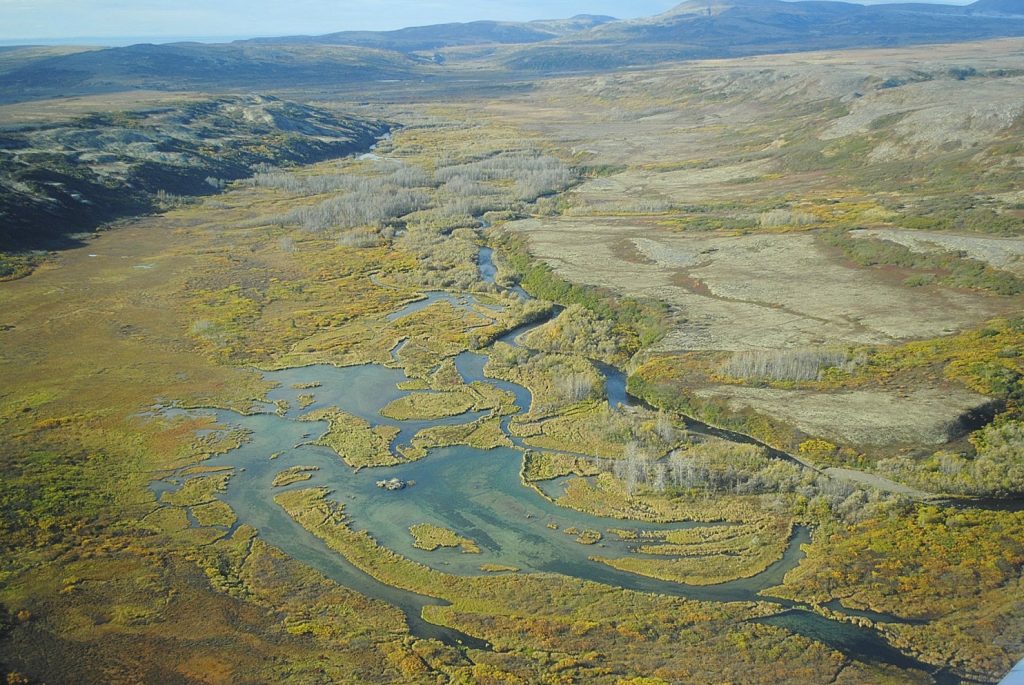Stakeholders in Alaska’s Bristol Bay have watched the federal and state regulatory landscape heave and buckle with the shifting sands of federal oversight.
Fishermen invested in other watersheds threatened by mining waste and potential mine development have watched this battle, as well. But the lessons to be learned shift at every turn. Join me and a panel of insiders on Monday at Pacific Marine Expo for a public meeting on Pebble Mine, where we will discuss next steps for the industry.
The Trump administration breathed life back into the prospects for Pebble Mine.
Pebble CEO Tom Collier wasted no time in penning a January 2017 editorial praising his company’s efforts to address the concerns of Alaska residents, the thousands of fishermen who make their living in the shadow of the potential mine and its caustic byproducts, and the millions of consumers who rely on Bristol Bay’s pristine rivers to welcome back the world’s largest wild salmon run year after year.
The United Fishermen of Alaska reported Bristol Bay’s 2016 commercial salmon ex-vessel value alone was $192 million, with a projected $214 million in 2017. And nearly 100 percent of local residents fish the bay for subsistence.
Former EPA Administrator Scott Pruitt’s agency quickly abandoned an Obama-era emergency action to protect the watershed after Pruitt took a meeting with Pebble interests in May 2017. In exchange for reopening a three-year window for which Pebble to file a plan, the mining interests withdrew lawsuits filed against the federal government after the project was thwarted by the EPA evaluation.
Despite Pruitt’s exit on July 5, 2018 (a resignation prompted by unrelated accusations of misappropriation of government funds), and the withdrawal in May of Pebble’s fourth investor, the Pebble permitting process has sailed through the Army Corps of Engineers, including a fast-tracked scoping report released in September. That report is the precursor to an Environmental Impact Statement and the first major step in Pebble’s federal permit process.
“Based on the Army Corps’ rushed scoping report, it’s abundantly clear that this administration has no interest in conducting an honest review of the impacts that the Pebble Mine would have on Bristol Bay’s salmon and the people who depend on it,” said Mike Friccero, representative for the Commercial Fishermen for Bristol Bay coalition. “If they did, then they would not have produced such a cursory report that omits thousands of comments, including that of expert scientists and commercial fishermen. Our nation’s largest and most valuable wild salmon fishery is on the line here. The Army Corps’ process will ultimately decide whether or not I and 14,000 other Americans will lose our jobs fishing in Bristol Bay.”
The bottom line for the Bristol Bay salmon fleet and other local residents who rely on those salmon returns is not just what happens now but what happens 50 years from now when the mine is no longer operating, Pebble Corp. no longer exists, and there’s a problem with maintenance of one of the toxic byproduct ponds?
The problem is not that Pebble hasn’t done enough to make the project appeal to the local community. Jobs and infrastructure are a sparkly lure. The problem is simply perspective. Is Pebble in Alaska for a fling or to start a long-term relationship?
An extractor who mines a finite resource looks at their job differently than someone who extracts a potentially infinite resource. Finite resources are found in many places in small amounts. This makes minerals miners relatively nomadic. They don’t need to put down roots where they work like a one-off greenhorn fisherman just there to survive the season and take home a check. The short-termer needs to connect just enough to get in and claim their share, knowing they will be gone when the season is over. What incentive do they have to build relationships and a good reputation with the rest of the crew if they know they never need to work with them again?
The captain, on the other hand, has a bigger responsibility to manage the boat as a whole, the crew, the resource — they all contribute to the bottom line of his or her business and require constant consideration of the future and potential pitfalls.
When your resource is bountiful and potentially infinite, relying almost entirely on the health of the environment in which it breeds, you have every incentive to ensure that environmental threats are managed with a view to the far-flung future.
This is why critics of Pebble ask simply (and repeatedly), “What is the advantage of risking the infinite salmon resource for the short-term gain of the metals resource?”
There will always be another greenhorn walking the docks. This is not the only pebble on the beach. Is it worth the risk of trading forever for now?
Join us for the discussion on Monday at 10:30 a.m. on the Main Stage in the Alaska Hall.
Get more from National Fisherman with our Expo special price for 16 issues plus digital access. See us in booth 755.







